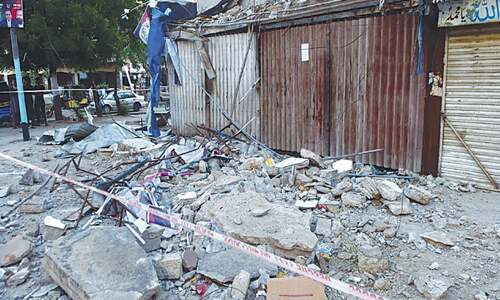HYDERABAD, Oct 11: A team of experts entrusted with the job of maintaining water quality since 2004 by then district government under Sindh High Court’s directives has said that Manchhar Lake has been rehabilitated with continued supply of required quantum of freshwater of hill torrents coming from upper Sindh through Main Nara Valley Drain (MNVD).
Team leader Dr Mohammad Ahsan Siddiqui also expressed the hope that the rehabilitation would sustain for at least seven to eight months until MNVD started getting heavy discharge of saline and contaminated water and released it in the lake. “But MNVD is the Sword of Damocles hanging over people of Sindh and its permanent solution is needed to keep this freshwater lake alive,” he told a news conference at the local press club on Thursday.
Dr Siddiqui said that people living in the surroundings of the lake could use the lake’s water for agriculture, washing and other chores safely. “The rehabilitation has been done without investing any money but the actual contamination of the lake will be addressed once discharges of MNVD into the lake are stopped and diverted to the Right Bank Outfall Drain (RBOD)”, he said.
According to him, from January this year to date around 72,920 cusecs of water has been released in River Indus while keeping different values of water within safe limits as per the parameters prescribed by the World Health Organisation (WHO).
River Indus feeds Keenjhar Lake in Karachi and water reservoirs for human consumption in Hyderabad.
He said that till Aug 5, Manchhar Lake’s level had come down to 105.95 RL. Due to flows of hill torrents the lake got around six-and-a-half feet of water and it became possible only because the lake’s water was constantly released in River Indus after ensuring safe dilution parameters as the lake water was usually contaminated. If River Indus is having adequate flows then after working out dilution formula water from the lake is released into river.
“Normally MNVD gets saline water and effluent at different locations. Its continued discharges take TDS (total dissolved solids) of the lake’s water to 6,000 mg/l (milligram per litre) as against WHO’s recommended value of 500mg/l. Likewise, values of arsenic and mercury are found to be abnormally high. After the lake’s water is released into the Indus to keep its level within safer limits, the lake is able to receive heavy flows of hill torrents; otherwise it would have caused breaches at different locations of its banks. That would have posed a threat to the population living in surroundings of lake,” said Dr Siddiqui.
At present, he said, TDS of MNVD and Manchhar Lake stood at 1,200 to 1,300 mg/l which though not up to the required parameters for drinking purposes, was still useable by local fishermen and growers for different other chores.
He said that managements of Lakhra and Jamshoro power plants were often pressured not to release the lake’s water into the Indus because they use river water for their plants and it showed a higher value of conductivity, which affected energy generation, he added.
“I have repeatedly asked power houses managements to improve their demineralisation process or establish reverse osmosis plants to treat river water before use but they appeared not ready even against my offer for free services for the purpose,” he claimed.
“They avoid using the required quantity of chemicals during demineralisation of river water,” Dr Siddiqui said, adding that he would propose to the government to conduct a study on water quality from Jamshoro to the Indus delta so that recommendations in this regard could be chalked out on the basis of its findings.
“MNVD is still getting hill torrents runoff from Balochistan. The Nai Gaj hill torrent also falls in the lake which improves its quality and the fishermen living in and around the lake will get some relief as far as water quality is concerned,” the expert said. He said that owing to the primarily concern of protecting quality of river water, a regular monitoring of water flowing into Manchhar Lake and that of MNVD was being done. “Samples are analysed and after looking into these values a dilution formula is worked out for release of the lake’s water into the Indus,” he said.














































Dear visitor, the comments section is undergoing an overhaul and will return soon.